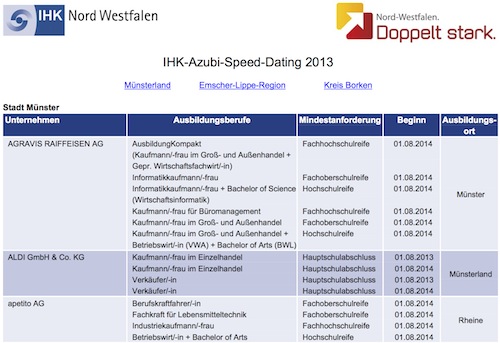 When the new Ausbildung year started recently, the DIHK, German Chamber of Commerce and Industry, confirmed that there were more than 146,000 positions yet to be filled. At the same time, the Federal Job Agency (Bundesagentur für Arbeit), confirmed that there were more than 200,000 students who had completed school but couldn’t find an ausbildung. Simple mathematics would dictate that only 54,000 should fail to find an ausbildung, but that isn’t the case.
When the new Ausbildung year started recently, the DIHK, German Chamber of Commerce and Industry, confirmed that there were more than 146,000 positions yet to be filled. At the same time, the Federal Job Agency (Bundesagentur für Arbeit), confirmed that there were more than 200,000 students who had completed school but couldn’t find an ausbildung. Simple mathematics would dictate that only 54,000 should fail to find an ausbildung, but that isn’t the case.
But what is causing this disparity in numbers and what could be done to solve it.
Otto Kentzler, from the DIHK suggests that more companies should give a chance to applicants with migrant backgrounds. The fact that students with migrant backgrounds have worse chances at getting an ausbildung isn’t a secret in Germany. In a recent study, Why Migrants have lower Chances at an ausbildung, they tried to discuss further on why this continues to happen. I appreciate the fact that Otto, points out that the problem also lies in the recruiters and not solely as it was portrayed in the study.
The German Federation of Trade Unions (Deutsche Gewerkschaftsbund (DGB)) suggested that the system should give a chance to students from the Realschule and Hauptschule. Currently, students from the Hauptschule are completely locked out of over 50% of the total Ausbildungen offered in Germany. The Vice President at the DGB, encourages companies to give the Hauptschule students a chance even if they’d have to extend the Ausbildung to ensure the students were at par with the rest.
It was also pointed out that in some cases, the job and the applicant tend to be in different regions and considering most applicants are in their teen years, they can’t move and live on their own in a different city as they try to get an ausbildung. Also the fact that some Ausbildungen aren’t as popular as others is also a huge problem, in some cases there are many positions open but not in the fields most of the applicants are applying for.
There were also difference between the applicants vs positions offered ratio. In NRW, Berlin, Hessen and Lower Saxony, there were more applicants than positions while in Hamburg, Mecklenburg-Vorpommern, Bayern, Thüringen and Baden-Württemberg, there were more positions than applicants.






